T is for Train#
Sat Apr 5 18:19:02 2025
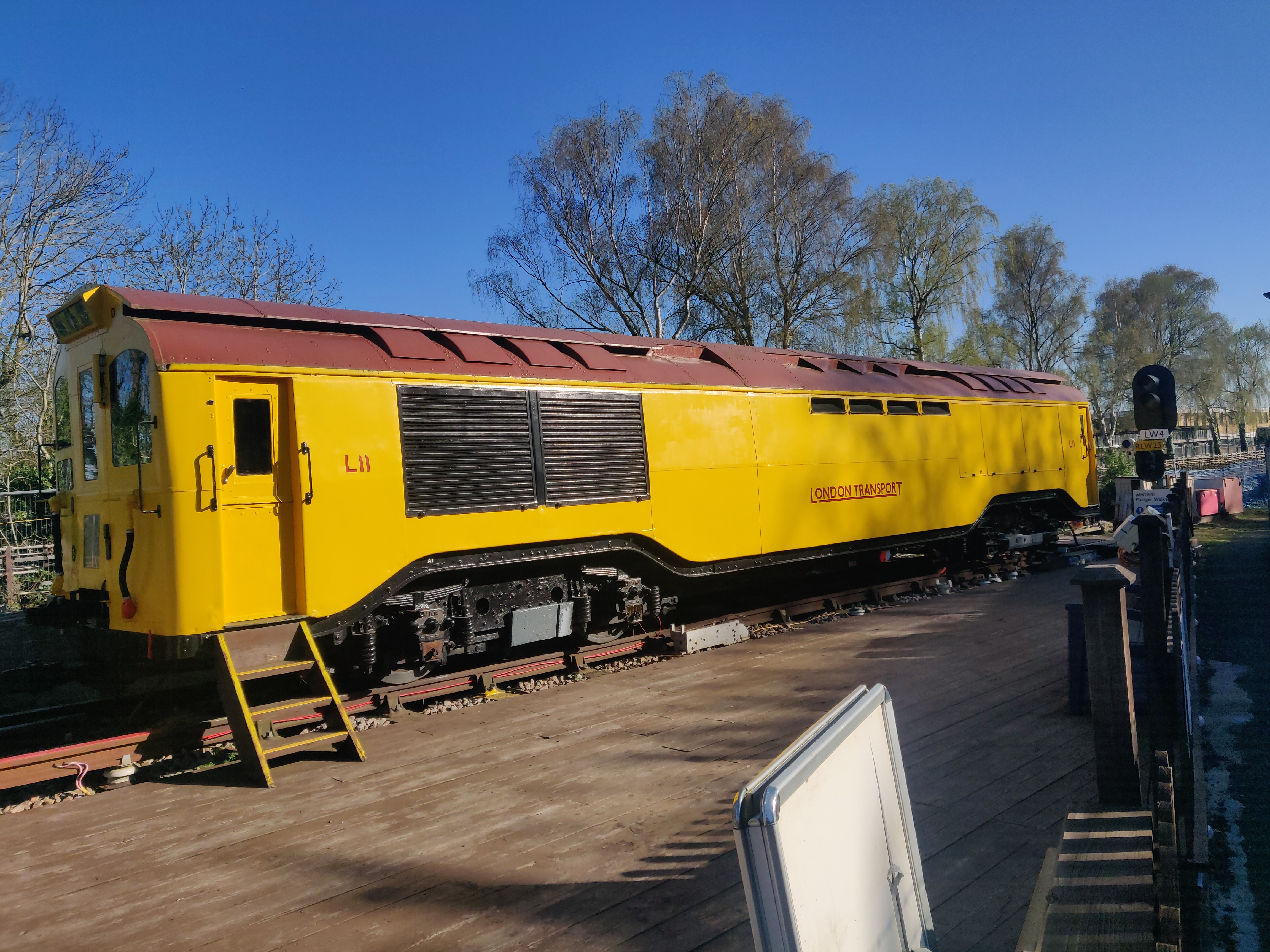 T is for Train. This bright yellow engine was used in the London Underground works at Acton as a shunter to push dead trains up and down the hill. It's made of two Piccadilly Line locomotives welded together (and a number of "bits box" parts making it a quite unusual artifact) and now lives at the Epping Signalling Museum
T is for Train. This bright yellow engine was used in the London Underground works at Acton as a shunter to push dead trains up and down the hill. It's made of two Piccadilly Line locomotives welded together (and a number of "bits box" parts making it a quite unusual artifact) and now lives at the Epping Signalling Museum
I don't have any photos of the inside, but I got shown all around it and had the controls explained. About a third of it by volume is given over to giant high current resistors: line voltage on the tube is (was) 650v and if you want to travel at less than full power ... that power has to go somewhere. I'm told that they glow red when in use
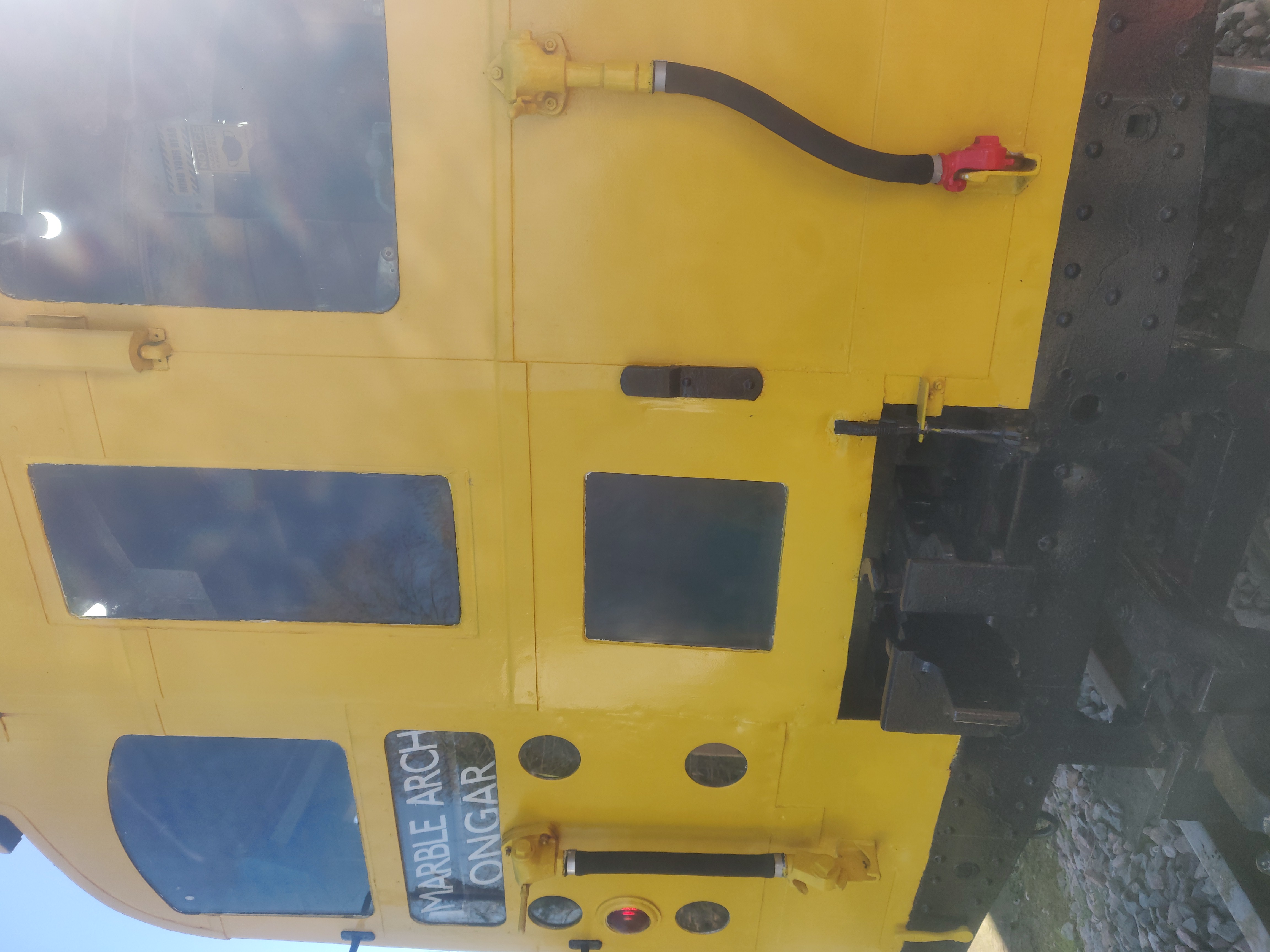 This is the view from one end: in the middle at the bottom you can see two sets of couplers so that it could be used with both tube and surface trains. The door was welded shut so that the driver was not tempted to open it/lean out/fall out while attaching to the train, then a glass pane set into it so that he could still see what he was doing.
This is the view from one end: in the middle at the bottom you can see two sets of couplers so that it could be used with both tube and surface trains. The door was welded shut so that the driver was not tempted to open it/lean out/fall out while attaching to the train, then a glass pane set into it so that he could still see what he was doing.
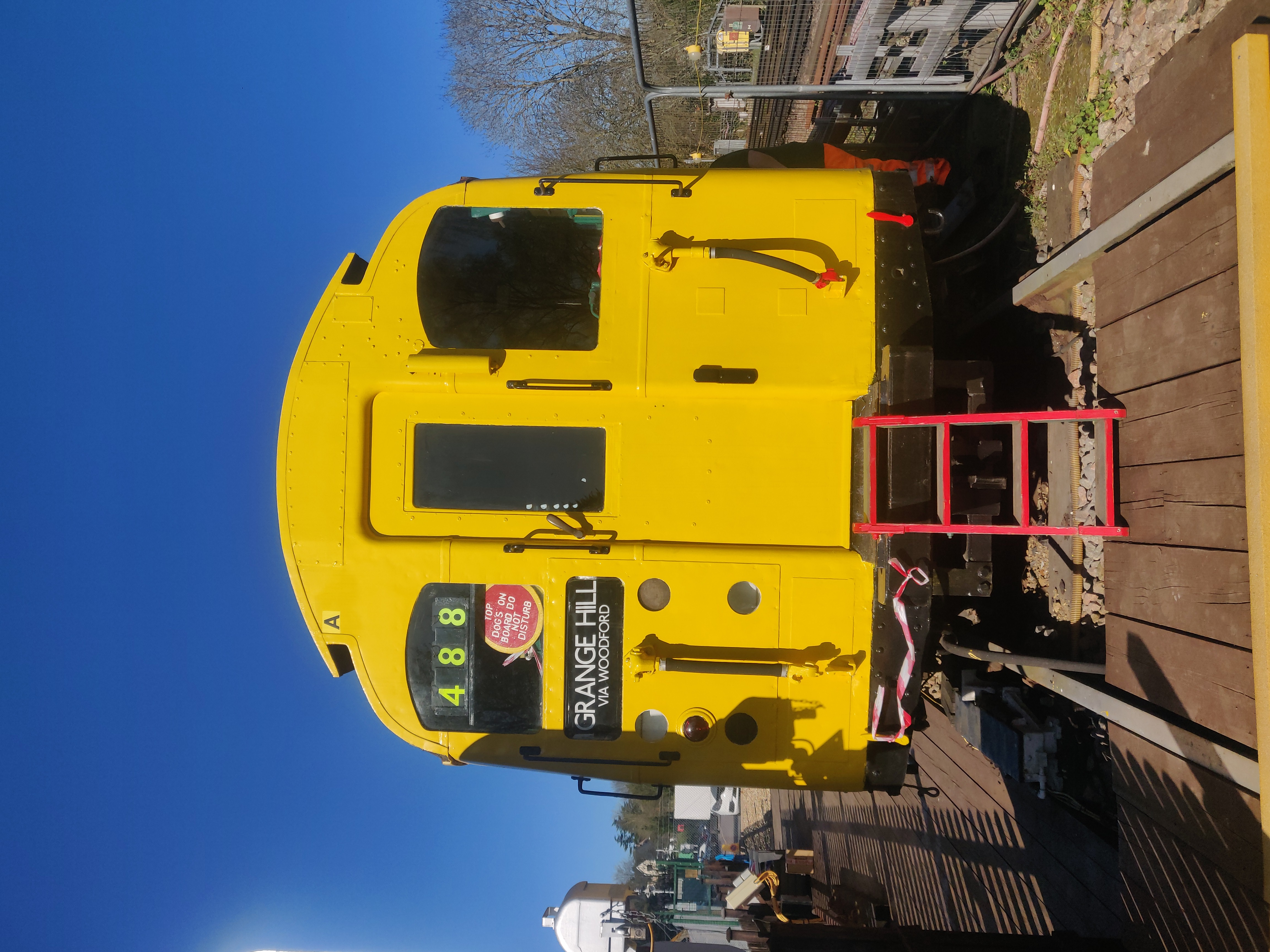 The other end looks more like a normal tube train cab (and the door opens), although still painted bright yellow.
The other end looks more like a normal tube train cab (and the door opens), although still painted bright yellow.
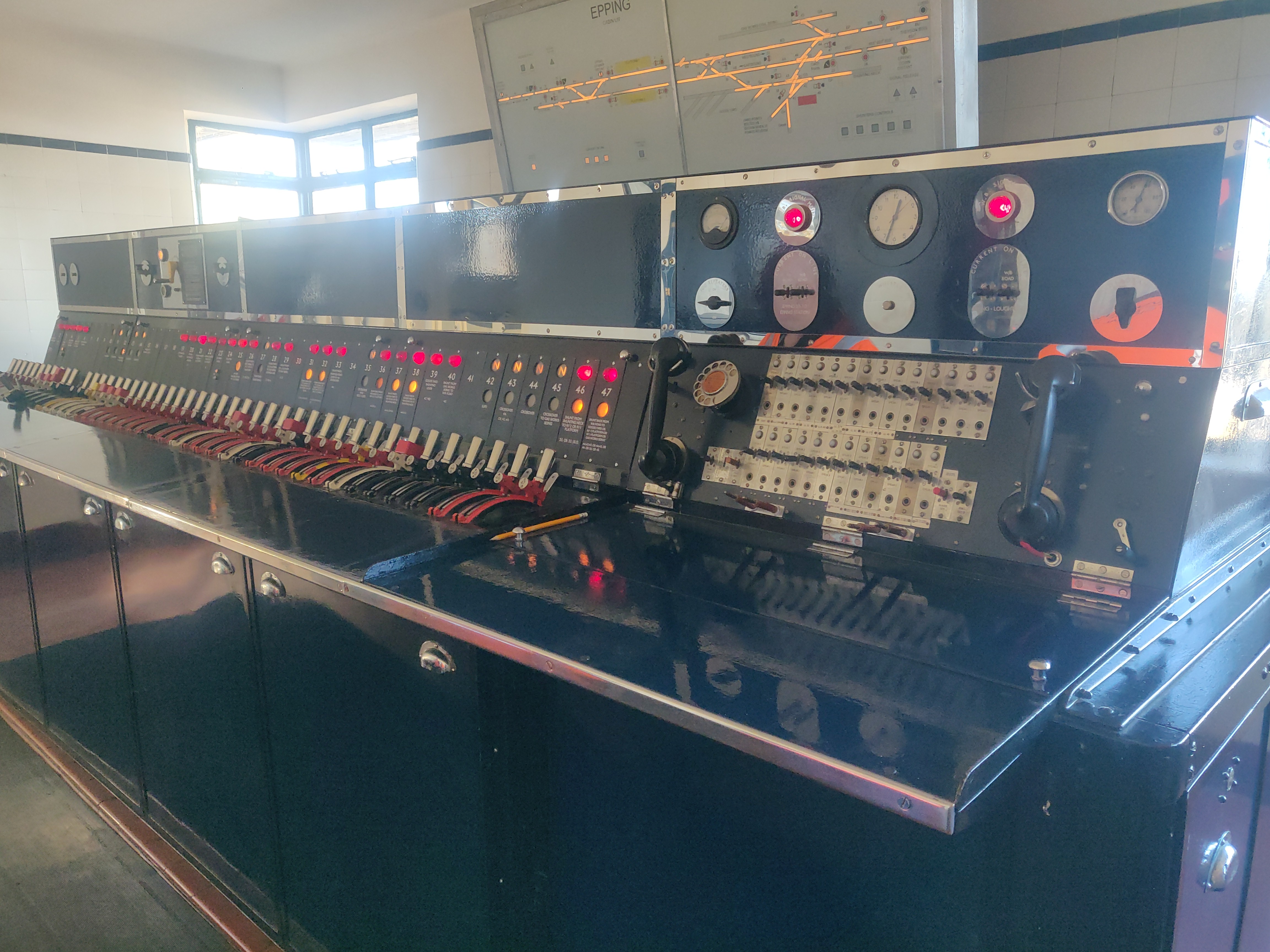 The rest of the museum is in the adjacent former signal cabin, including this restored signal frame with 47 levers. Epping was complicated to signal as it had passenger trains and also goods steam trains (longer stopping distances) for the brick works and gas works which also used to be here.
The rest of the museum is in the adjacent former signal cabin, including this restored signal frame with 47 levers. Epping was complicated to signal as it had passenger trains and also goods steam trains (longer stopping distances) for the brick works and gas works which also used to be here.
Under the desk, the levers are linked to very hefty sliding metal rods with cutouts and dogs and things that provide mechanical interlocks preventing the operator from e.g. setting a green signal for two trains that would merge onto the same section of track and colliding. It's a hardware state machine. The levers eventually operate relays which operate pneumatic switches that operate signals or throw points using compressed air.
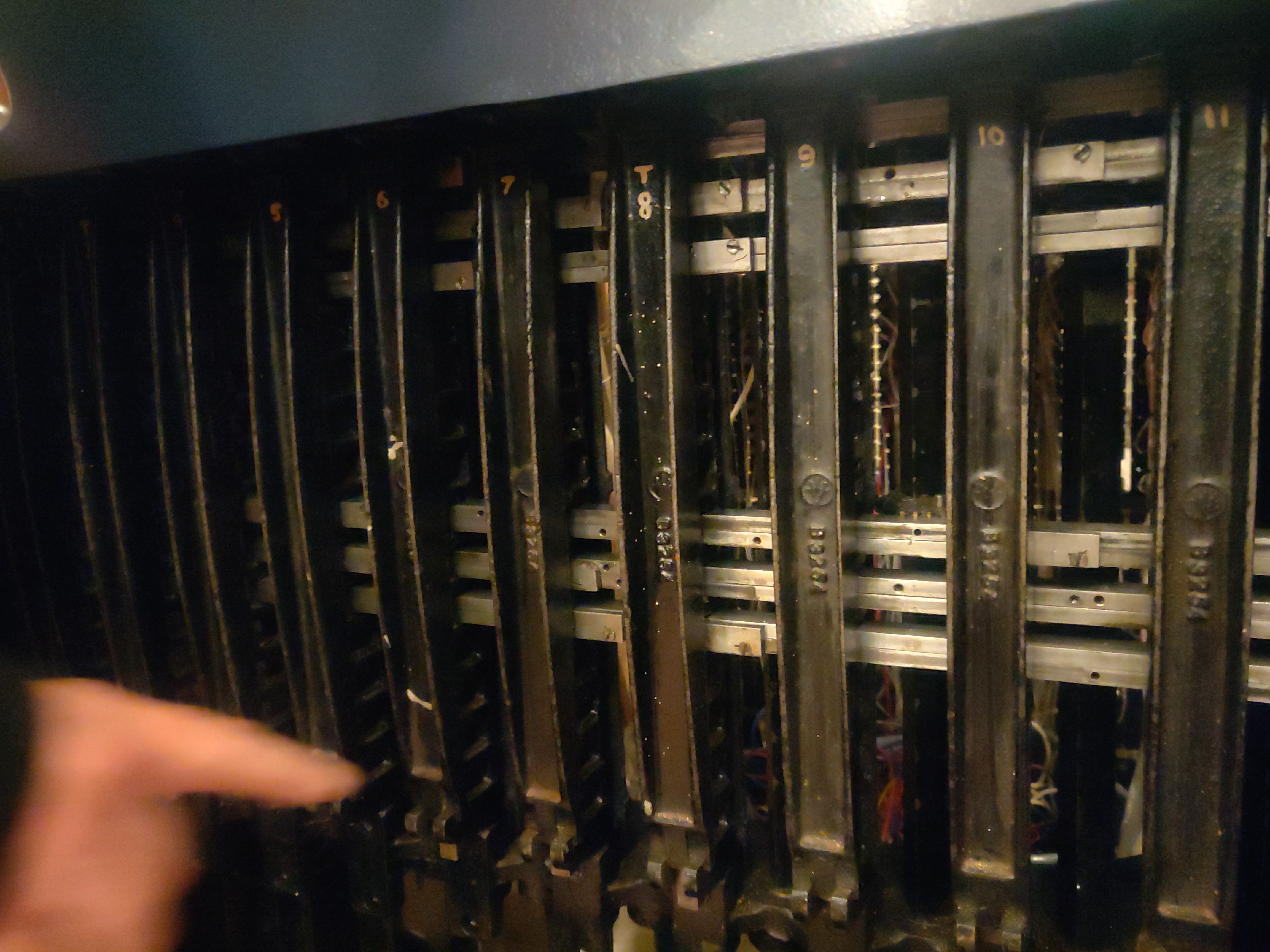 A signal frame seen from underneath. Some of the bits go side to to side when the levers are thrown, and this causes other bits to be prevented from going side to side. I think. Boolean logic in hardware.
A signal frame seen from underneath. Some of the bits go side to to side when the levers are thrown, and this causes other bits to be prevented from going side to side. I think. Boolean logic in hardware.
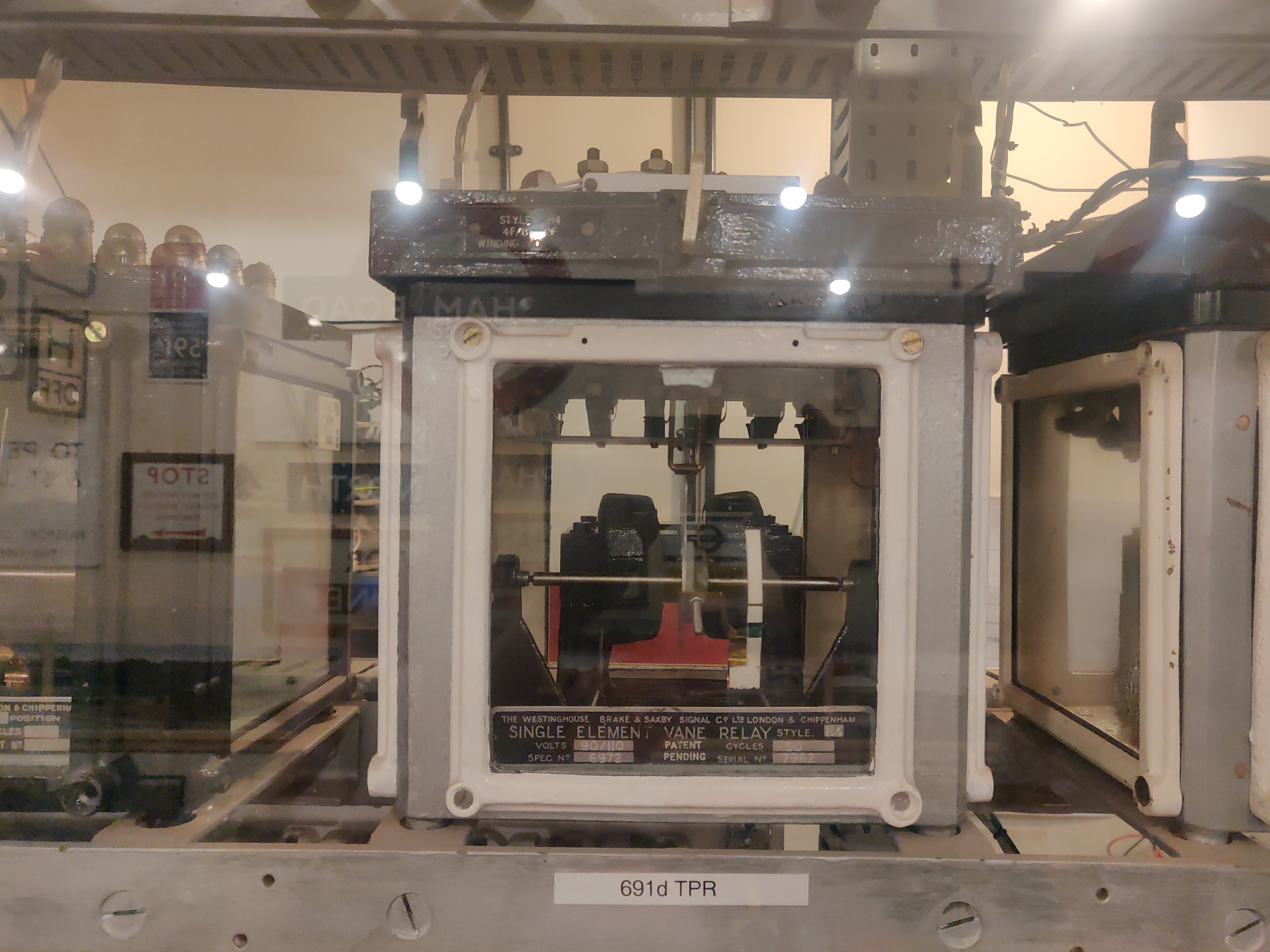
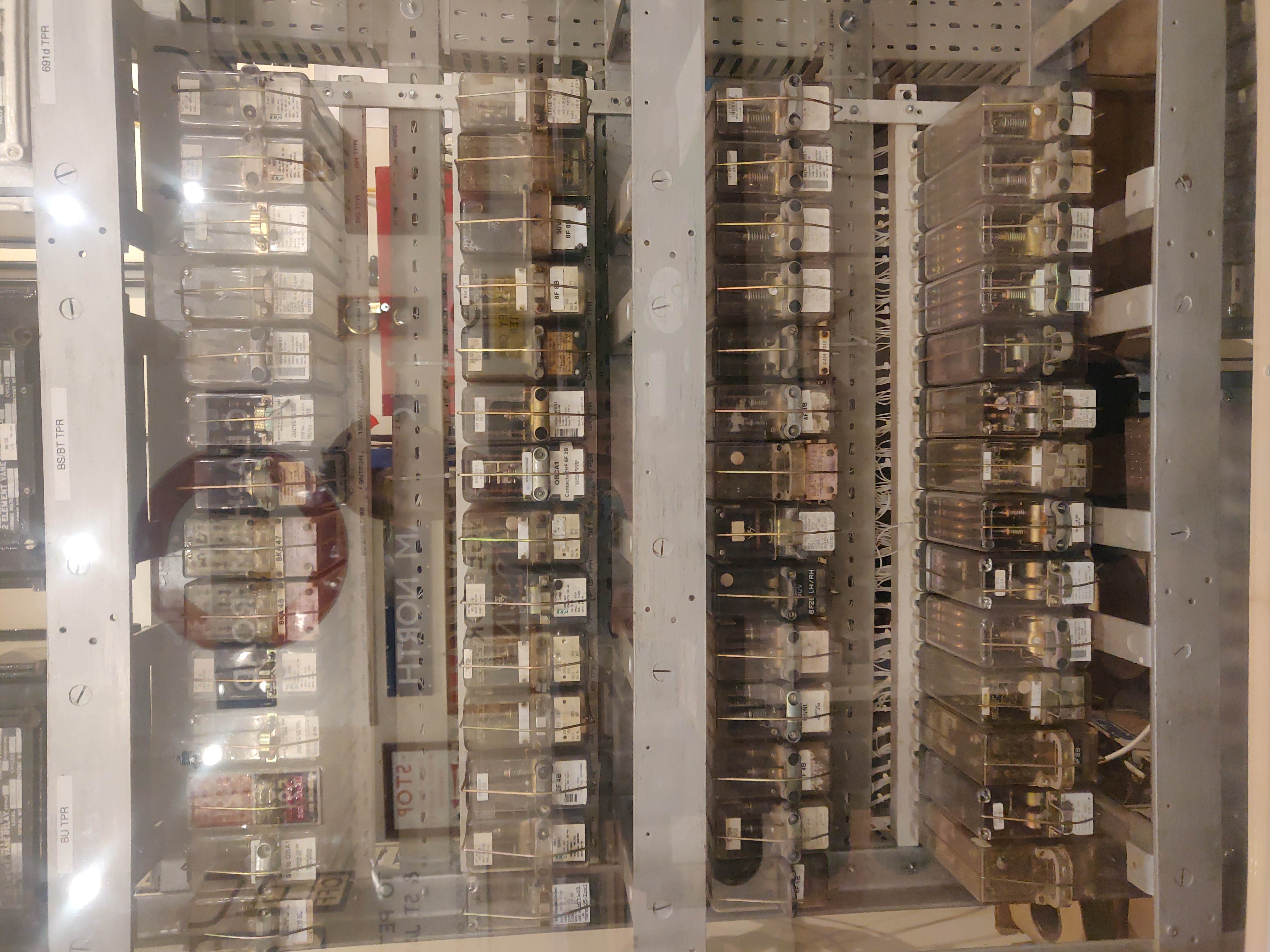 There at least three generations of relay design exhibited. The oldest ones ("fishbowl" relays) are ~ 100 years old and others like them are still running on some railways in India.
There at least three generations of relay design exhibited. The oldest ones ("fishbowl" relays) are ~ 100 years old and others like them are still running on some railways in India.
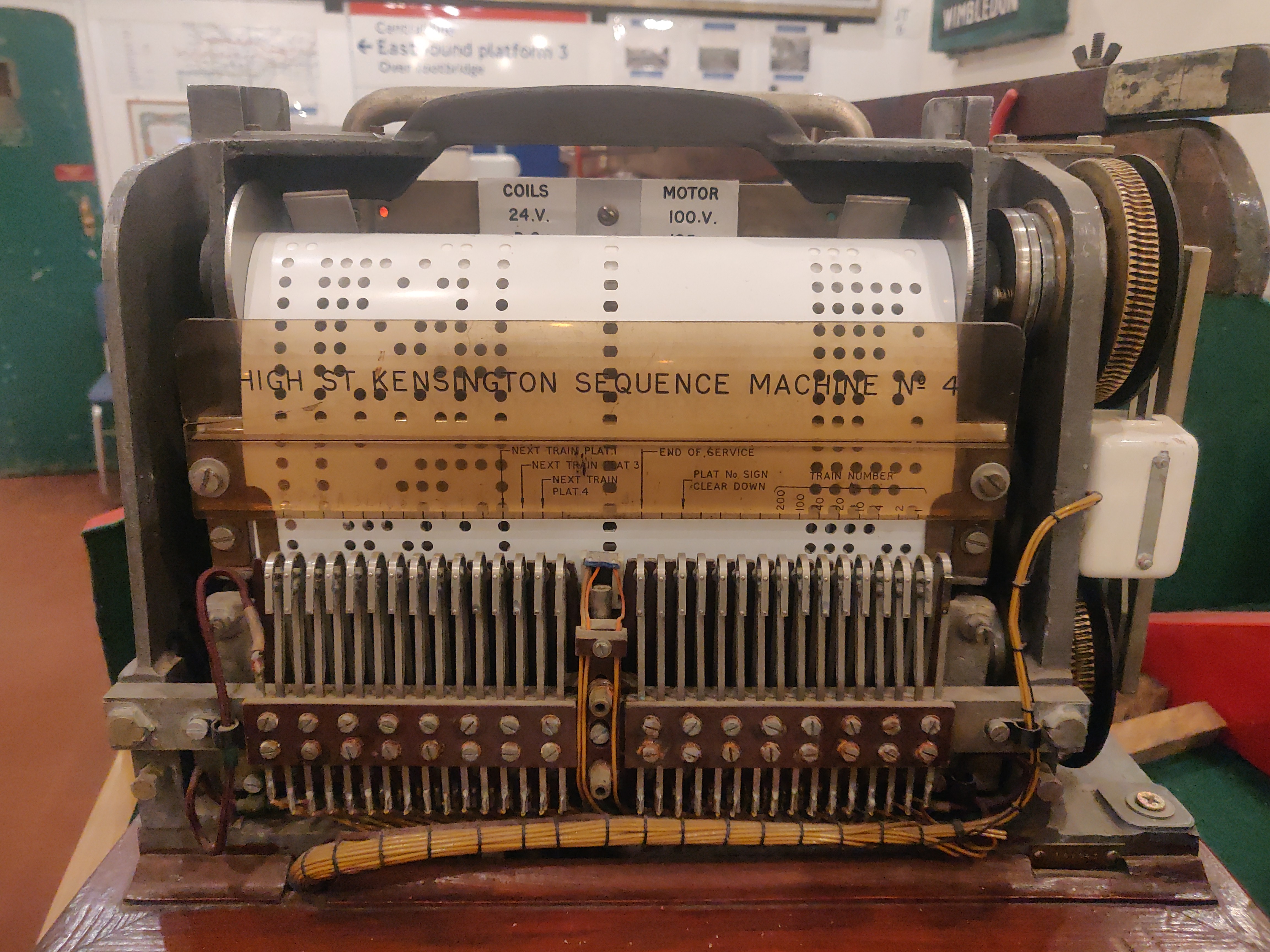 The "train sequencer" machine is a mechanical paper tape reader that knew which train should be where (separate decks for weekdays and Saturday services). Left hand columns were timecode and right hand columns were for the train number. It operated ... relays. There are a lot of relays.
The "train sequencer" machine is a mechanical paper tape reader that knew which train should be where (separate decks for weekdays and Saturday services). Left hand columns were timecode and right hand columns were for the train number. It operated ... relays. There are a lot of relays.
Anyway, if it wasn't already obvious I found the whole thing fascinating and a great way to spend 90 minutes.
It was however only 10 miles from home, so not a whole lot to say about the motorcycle trip there. I am attempting to build a habit of doing shoulder checks whenever I move off (although I did as a result get uncomfortably close to rear-ending a police car the other day, which would have been incredibly embarrassing. There's a time and a place, I suppose)
https://www.eppingmuseum.com/